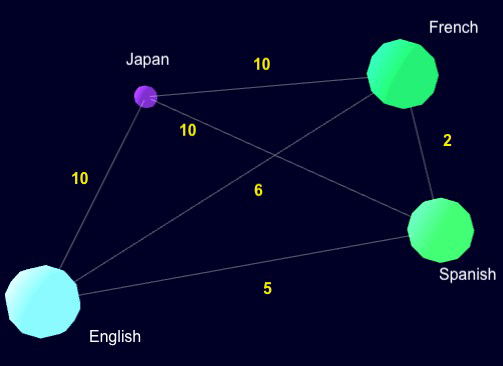Computer-assisted dlc modelling

Computer- assisted DLC Modelling
Individual DLC models self-created by users with the mediation of software programs can be used as awareness raising means for multilingual speakers. They help each one to appropriate their own language assets through geometric and visual properties rather than habitually neglecting them. Producing one's personal combination of language skills is an informative and emotionally rewarding activity for language users of various ages. DLC modelling is important for language users, learners and researchers because it helps them understand that they interact with a language-culture-setting entity that functions as a unit. It possesses unique qualities that are not reducible neither to characteristics of particular languages, or to their pair-interactions, nor only to a particular speaker's abilities. DLC modelling aims to uncover this additional value and unique quality that each DLC possesses. DLC databases enable learners, teachers, researchers, education and social practitioners, and governmental bodies to quickly find important information about particular features of multilingual social groupings and individuals and allow for their detailed study and comparison. In addition to individual language users, there exist multiple other stakeholders who need to see both the whole picture and the details of particular sociolinguistic situations. These include city and regional authorities, language policy developers, administrators at schools and universities, teachers, social workers and researchers. For all of these, DLC modelling can be instrumental. See the demo by Laurent Moccozet and Nicolas Boeckh , Institute of Information Service Science, CUI University of Geneva https://youtu.be/ircgrC4ATkg 3D visualisation of Dominant Language Constellations (DLCs) - YouTube
Learn More